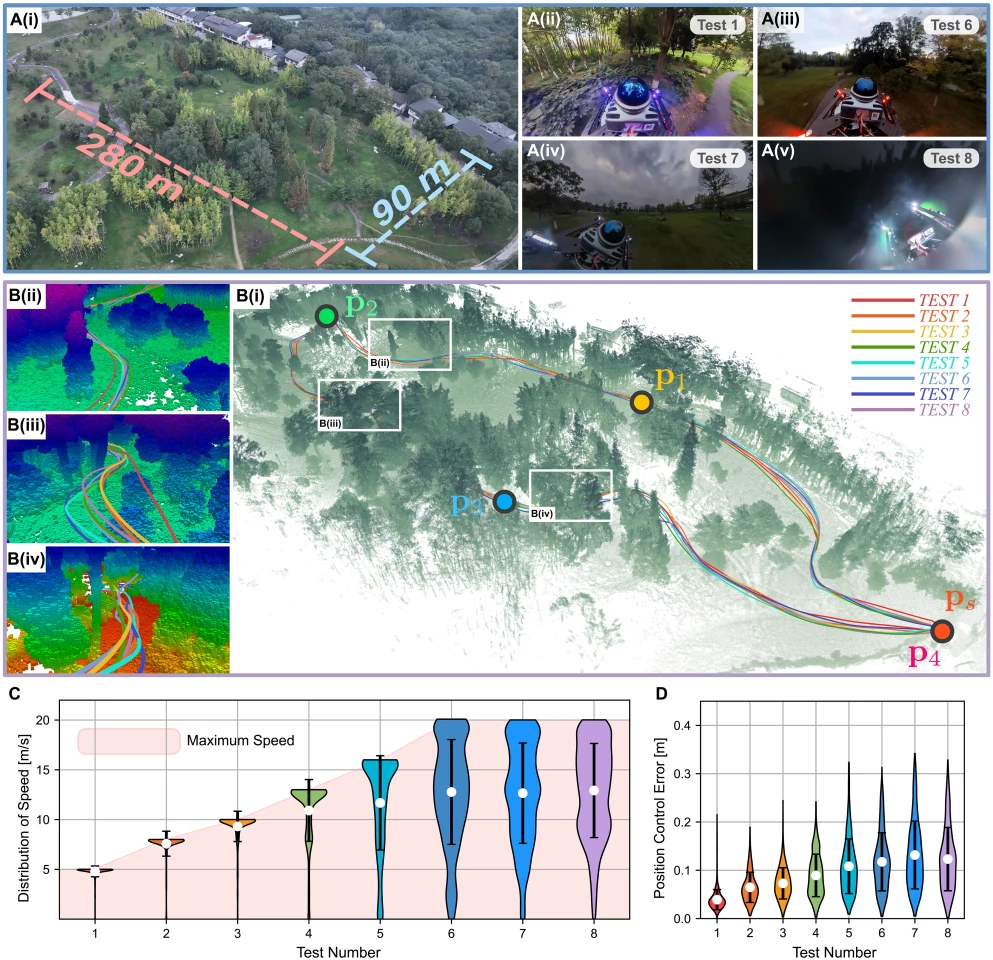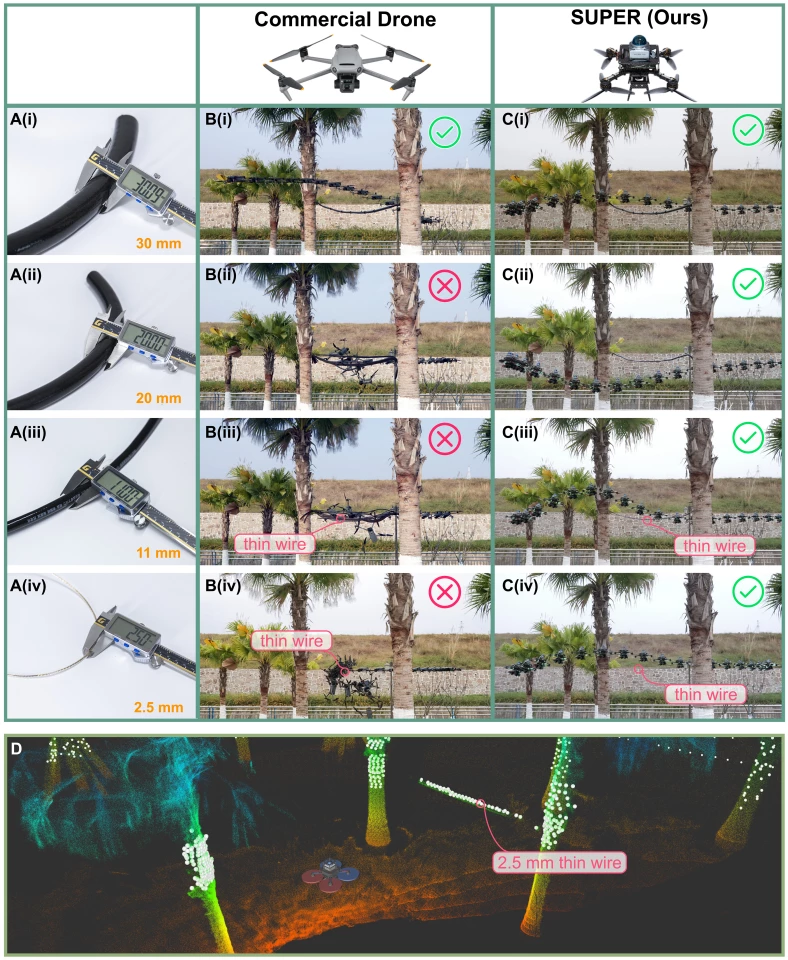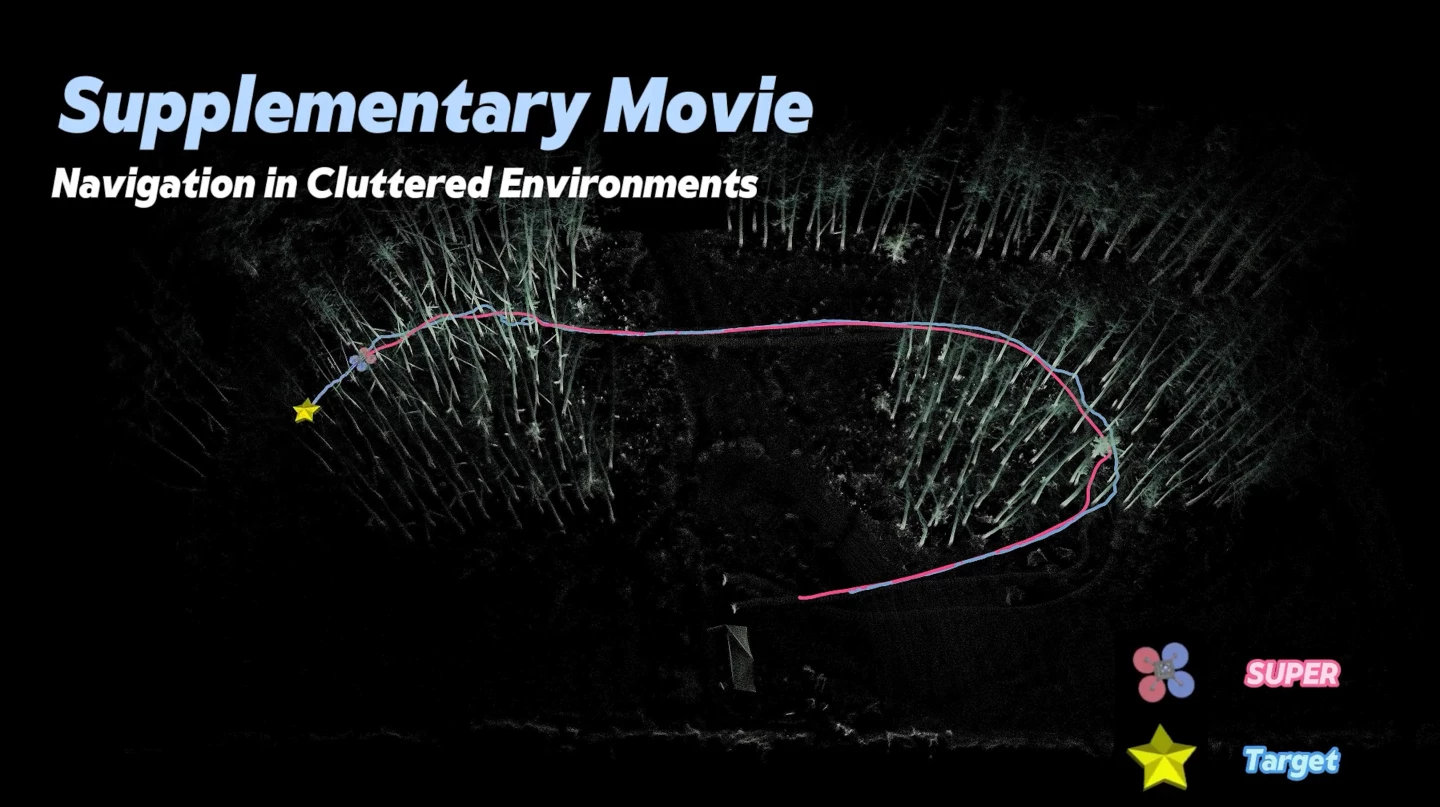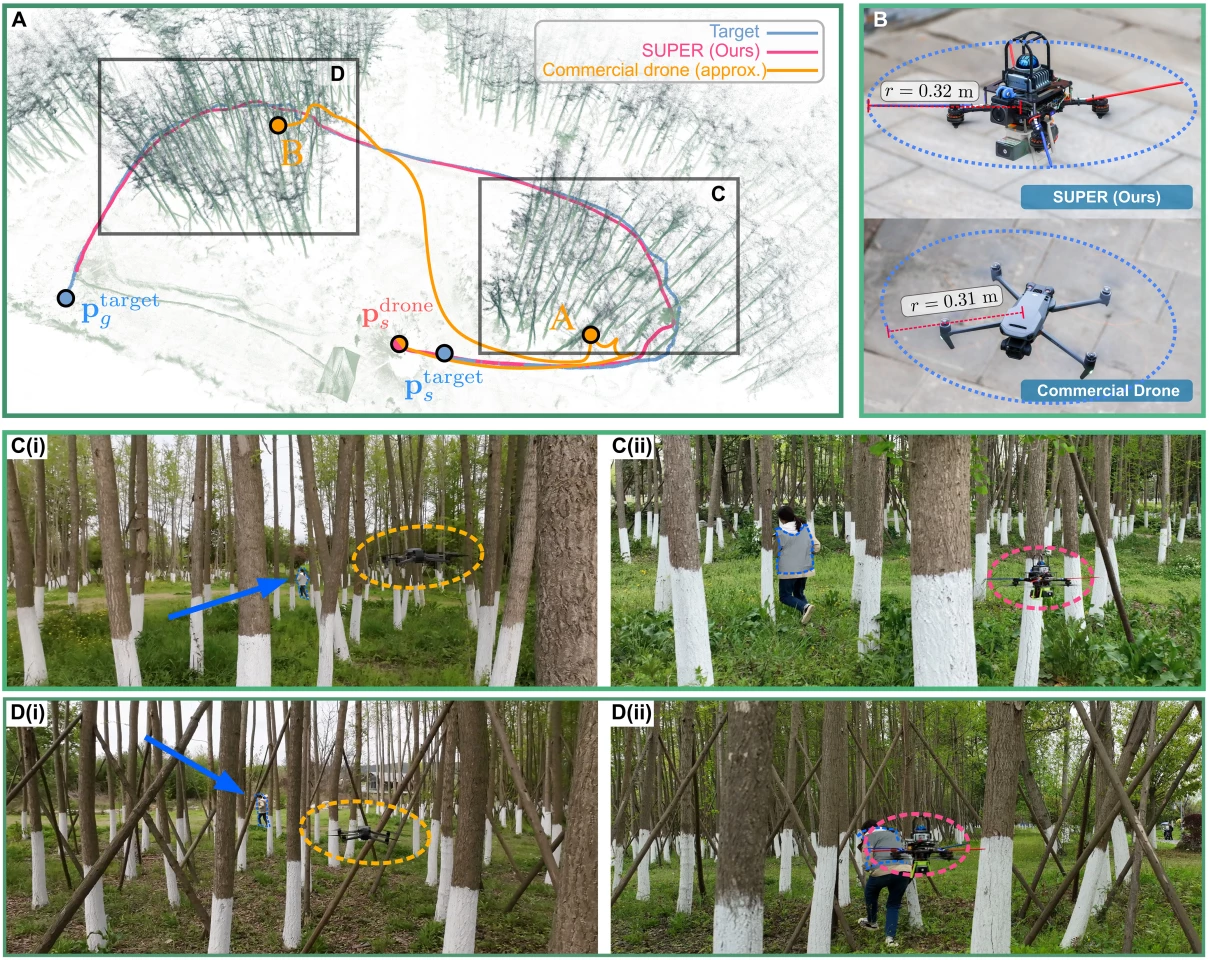The latest in crazy impressive drone technology isn't from DJI (or "research drones" approved by the FAA), it's from the University of Hong Kong. And it's called the "safety-assured high-speed aerial robot," also known as SUPER. Is it really super though?
The autonomous SUPER micro aerial vehicle (MAV) measures about 11 inches (28 cm) across and packs hummingbird-like agility and speed. We're talking in excess of 45 mph (72 km/h).
But what separates the SUPER from other much faster racing drones capable of 100+ mph (160+ km/h) that can turn on a dime is that the SUPER runs on AI and has 3D LiDAR onboard. That is, it uses pulse firing lasers for light detection and ranging, giving the SUPER eagle-eye vision, able to accurately see down to less than half an inch (1 cm) from 230 ft (70 m) away.

Imagine being able to clearly see a thumb tack on the sidewalk from the top of an 18-story building. Yeah, that's what SUPER's 3D LiDAR is capable of.
What also makes this thing pretty insane is the level of obstacle avoidance it has while clipping along at top speed. Again, it's no match for a hardcore racing drone in a drag race, but its ability to autonomously pick a clear path through tons of thin branches at 45 mph while chasing a human like they have a bounty on their head is pretty next-level (if AI ever flips the switch, it's pretty much "game over, humanity").
I've never seen a professional human operator attain that level of high-speed-precision attack through those kinds of high-stakes, drone-crushing conditions.
Do you remember the last time you flew your drone and clipped that clothesline you didn't see? I do. Mine's still in pieces in the garage, I just don't have the heart to throw away my $1,400 heap of garbage.

The SUPER's 3D LiDAR system can see wires down to as thin as about 1/10th of an inch (2.5 mm) in high definition. That's about the size of a low E guitar string or a tiny twig on a tree.
In the paper that the University of Hong Kong released along with the figures and video footage is a whole heap of math relating to parameterization, trajectory optimization, formulas, and "kinodynamic constraints" that fly far, far over my head, but it works.
Even in absolute darkness, the drone can blaze through obstacle courses with incredible speed and obstacle avoidance. In fact, the onboard AI goes so far as to plot two trajectories simultaneously: one optimized for outright speed and the other leaning towards "safety net, just in case" to avoid collisions. With this "pull the pins" approach, SUPER reduced failure rates – e.g., the ol' crash and burn – by a factor of 35.9 while still reaching speeds over 45 mph. That means it's nearly 40 times safer, even at high speed.

Watching the SUPER map out its environment in detail with 3D LiDAR in real time is reminiscent of the Command and Conquer or StarCraft days as you explore the map.
The SUPER MAV has a thrust-to-weight ratio over 5.0, making it dizzyingly agile and able to quickly make direction changes. For comparison, a state-of-the-art 5th-gen Lockheed Martin F-35 Lightning II multirole stealth fighter has a paltry thrust-to-weight ratio of 0.87 or so.
This is all seriously cool tech (or terrifying for those fearful of AI sentience) that could have a whole host of practical uses: disaster relief, search and rescue, inspecting infrastructure ... or fleets of falcon-like AI drones patrolling the skies in some dystopian nightmare scenario, à la Skynet Hunter Killers.

We're betting hoping for the former, where drones like the SUPER can quickly assess hard-to-reach situations and relay necessary information to rescuers in an effort to preserve life.
The SUPER is far from commercially available as of yet. There are search and rescue drones currently on the market, however, like the DJI Matrice 30T. It's a favorite amongst police and emergency response teams as it's rugged, easy to use, weather-resistant, and has an entire suite of potentially life-saving features like thermal imaging, optical zoom, and laser range-finding.
Perhaps combining the technology of each might yield the ultimate in search and rescue technology.
Below is the raw footage supplied by the University of Hong Kong of some pretty thorough SUPER MAV testing.
Source: Science Robotics











